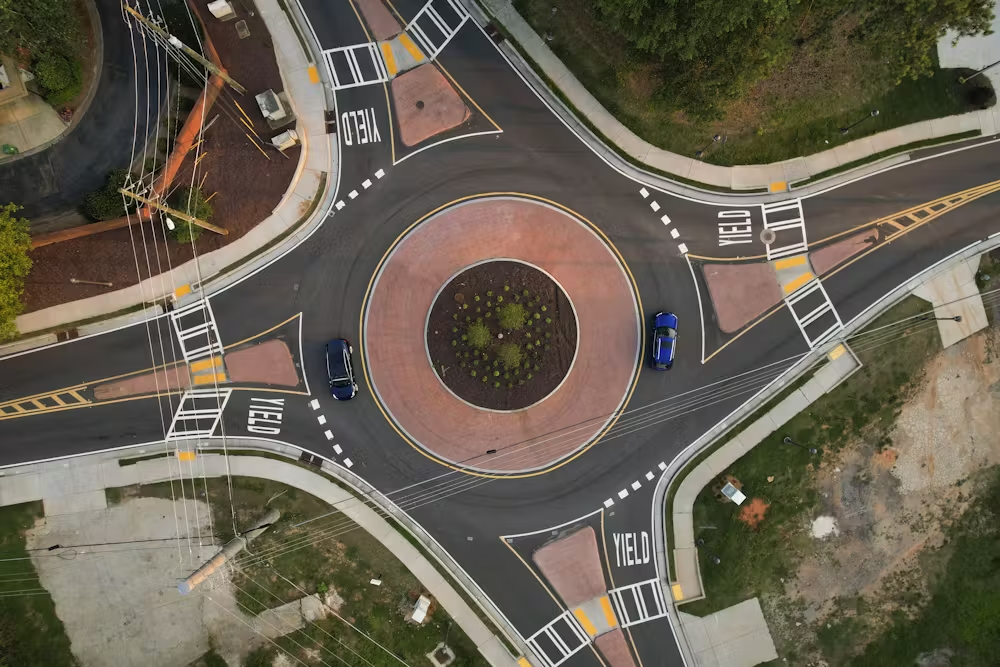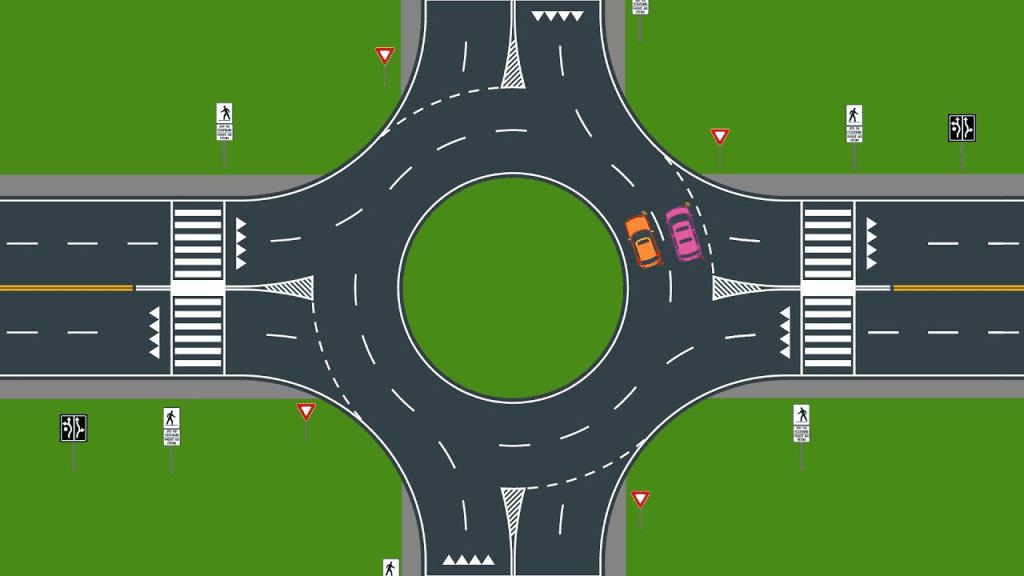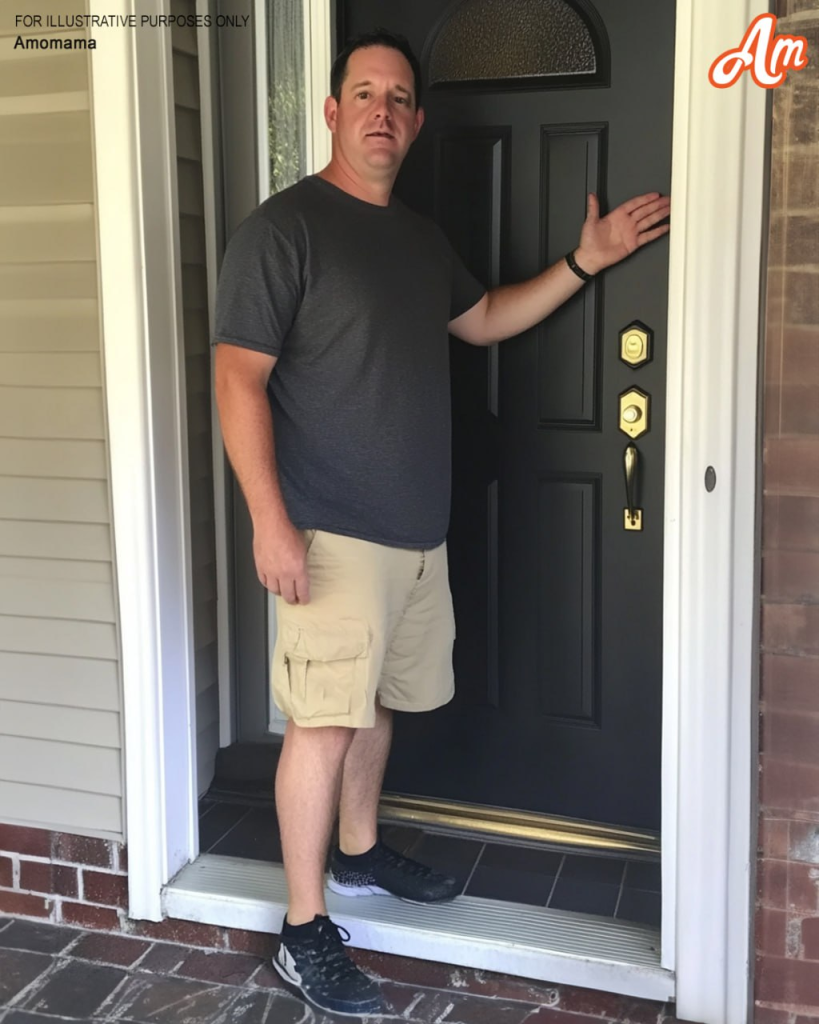If you’ve been driving through U.S. cities and towns, you’ve likely noticed an increase in roundabouts replacing traditional four-way intersections. Some drivers embrace them as an efficient traffic solution, while others find them confusing or even intimidating.
But what exactly is a roundabout, and why is it becoming a preferred alternative to stop signs and traffic signals? Roundabouts are not just about traffic flow—they are a safer, more efficient, and environmentally friendly way to design roads.
Let’s break down what roundabouts are, how they work, and why they are considered one of the most effective traffic management solutions today.
What is a Roundabout? Understanding the Basics

A roundabout—also known as a rotary or traffic circle—is a circular intersection where vehicles move counterclockwise around a central island. Unlike traditional intersections controlled by stop signs or traffic lights, roundabouts operate using a yield-at-entry system, meaning:



Most roundabouts also include:



The result? A smoother, safer, and more efficient intersection that reduces both traffic delays and accidents.
A Brief History of Roundabouts
Many people assume roundabouts are a modern innovation, but their history dates back hundreds of years.
Video : Roundabout Safety Benefits
- 1700s – Early versions of circular intersections appeared in Europe, particularly in England and France.
- 1800s-1900s – Washington, D.C. was designed with multiple traffic circles, inspired by European models.
- 1950s – The United Kingdom introduced the yield-at-entry rule, transforming roundabouts into the efficient system we use today.
- 1990s – The first modern roundabout in the U.S. was built in Summerlin, Nevada in 1990.
- Today – Over 10,000 roundabouts exist in the United States, with more being installed every year.
While roundabouts have been common in Europe and Australia for decades, the U.S. is now rapidly adopting them due to their proven safety and efficiency benefits.
Why Roundabouts Are Safer Than Traditional Intersections
One of the biggest reasons cities are replacing traditional intersections with roundabouts is safety.
1. Fewer Conflict Points = Fewer Accidents
A typical four-way intersection has 32 conflict points—areas where vehicle paths cross, increasing the risk of collisions. In contrast, a roundabout reduces conflict points to just 8.
This means:



According to the Federal Highway Administration (FHWA), roundabouts can reduce serious and fatal crashes by up to 90% when replacing a stop-controlled intersection. Even when replacing a traffic signal intersection, they reduce serious crashes by nearly 80%.
2. Lower Speeds = Less Severe Collisions
In a roundabout, vehicles enter and exit at lower speeds (15-25 mph), compared to the higher speeds (40-50 mph) seen at traditional intersections.
Lower speeds lead to:



3. Safer for Pedestrians and Cyclists

Roundabouts offer better protection for pedestrians because:



With these safety features, roundabouts significantly reduce pedestrian-related accidents compared to traditional intersections.
Efficiency: Why Roundabouts Improve Traffic Flow
Beyond safety, roundabouts are also more efficient than stop signs or traffic lights.
1. Less Waiting, More Moving
At a traditional intersection, cars must stop at red lights, even when there’s no cross traffic. In a roundabout:



2. Eliminating Left Turns = Smoother Flow
One of the most dangerous and disruptive movements at an intersection is the left turn. Roundabouts eliminate left turns, forcing all vehicles to move in the same direction, improving:


3. Roundabouts Handle High Traffic Volumes Better
Unlike stop signs and traffic lights, which cause congestion during peak hours, roundabouts allow continuous movement, making them ideal for high-traffic areas.
Environmental Benefits: How Roundabouts Help the Planet

Roundabouts aren’t just safer and more efficient—they also have environmental advantages.
1. Reduced Fuel Consumption


According to studies, roundabouts can reduce fuel consumption by up to 30%, making them a cost-effective solution for drivers.
2. Lower Carbon Emissions
Fewer stops and starts mean lower emissions, helping reduce air pollution in urban areas. Cities that replace signalized intersections with roundabouts see:


3. Less Road Maintenance Required


With less infrastructure to maintain, roundabouts save cities money in the long run.
Challenges: Why Some Drivers Struggle with Roundabouts
Despite their many benefits, some drivers remain hesitant about roundabouts. Common challenges include:



However, studies show that once drivers become familiar with roundabouts, their confidence improves significantly.
Video : Principles of Intersection Safety
Final Thoughts: Are Roundabouts the Future of Road Design?
Roundabouts are more than just a traffic trend—they are a safer, smarter, and greener solution for modern transportation. With their ability to reduce crashes, improve traffic flow, and lower emissions, they are quickly becoming a preferred alternative to traditional intersections.



As more states adopt roundabouts in urban and suburban planning, they will likely become a permanent feature of America’s roadways.
So next time you approach a roundabout, embrace the change—it’s making our roads safer and more efficient for everyone!
MY HUSBAND GOT ANOTHER WOMAN PREGNANT WHILE I WAS ON A BUSINESS TRIP – MY REVENGE MADE HIM SOB.

The sterile scent of antiseptic and the rhythmic beeping of the heart monitor had become the soundtrack of my life. My three-year-old son, Leo, lay frail in the hospital bed, his small body battling a relentless illness. And while I navigated the labyrinth of medical jargon and the agonizing uncertainty of Leo’s condition, my husband, Jacob, was betraying me.
A business trip, he’d called it. A chance to network, to secure a better future for our family. Little did I know, the “networking” involved his colleague, Jessie, and a betrayal that would shatter my world.
Jessie’s message arrived like a poisoned arrow, delivered through the cold, impersonal medium of a text message. “Jacob and I… we’re expecting.”
The words blurred before my eyes, the world tilting on its axis. Leo’s illness, the stress, the exhaustion – it all paled in comparison to the searing pain of betrayal. Jacob, the man I had loved for eight years, the father of my sick child, had abandoned us for another woman.
He packed his bags, his movements devoid of remorse. His parting words, callous and cruel, echoed in my ears: “I don’t regret anything. I’m fed up with you and this little burden.”
He left, leaving me to pick up the pieces, to face Leo’s illness alone, to navigate the wreckage of our shattered life.
But amidst the devastation, a flicker of resolve ignited within me. Jacob wouldn’t get away with this. He wouldn’t escape the consequences of his actions. He needed to learn a lesson, a harsh, unforgettable lesson.
I waited, patiently, for the initial storm to subside. I focused on Leo, on his recovery, on rebuilding a life for us, a life without Jacob. I buried my anger, nurturing it, shaping it into a weapon.
Months later, when the dust had settled, I reached out to Jacob. I invited him over, suggesting we discuss the terms of our separation, the logistics of parental rights. He arrived, his demeanor smug, his eyes filled with a self-satisfied gleam. He thought he had won. He thought he had escaped unscathed.
We sat at the kitchen table, the same table where we had shared countless meals, countless memories. I spoke calmly, rationally, discussing the legalities, the practicalities. He nodded along, his eyes never leaving mine, a predatory glint in their depths.
He left that day, beaming, convinced he had secured a favorable outcome. He thought he had manipulated me, played me for a fool.
But the real game was just beginning.
A week later, I filed a lawsuit against Jacob. Not for alimony, not for child support, but for full custody of Leo. And I didn’t stop there. I included a detailed account of his infidelity, his abandonment of a sick child, his callous disregard for our family. I attached Jessie’s text message, the one that had shattered my world, as evidence.
The lawsuit landed on his doorstep like a thunderbolt. He called me, his voice trembling, his bravado shattered.
“What is this?” he demanded, his voice laced with panic.
“It’s a lawsuit, Jacob,” I replied, my voice cool. “For full custody of Leo.”
“You can’t do this!” he sputtered. “I’m his father!”
“You abandoned him, Jacob,” I said, my voice flat. “You abandoned us both. You forfeited your right to be a father.”
“But… but Jessie,” he stammered. “We’re having a baby.”
“Congratulations,” I said, my voice dripping with sarcasm. “Perhaps you’ll learn from your mistakes this time.”
The lawsuit was a public humiliation. It was splashed across local news websites, gossip columns, and social media. Jacob’s reputation, his career, his new relationship – all were tarnished.
He tried to fight back, to discredit me, to paint me as a vindictive ex-wife. But the evidence was irrefutable. His actions spoke louder than any words.
The court granted me full custody of Leo. Jacob was granted supervised visitation rights, a stark reminder of his betrayal. He was ordered to pay child support, a financial burden that would haunt him for years to come.
He sobbed in the courtroom, his tears a pathetic display of remorse. But it was too late. He had made his choices, and now he had to live with the consequences.
Leo, thankfully, made a full recovery. We rebuilt our lives, stronger, more resilient. We found a community of support, a network of friends who embraced us, who helped us heal.
Jacob, on the other hand, was left with nothing but regret. He had traded a loving family for a fleeting affair, a moment of selfish gratification. He had learned his lesson, a harsh, unforgettable lesson. And I, in turn, had found my strength, my voice, my revenge.



Leave a Reply